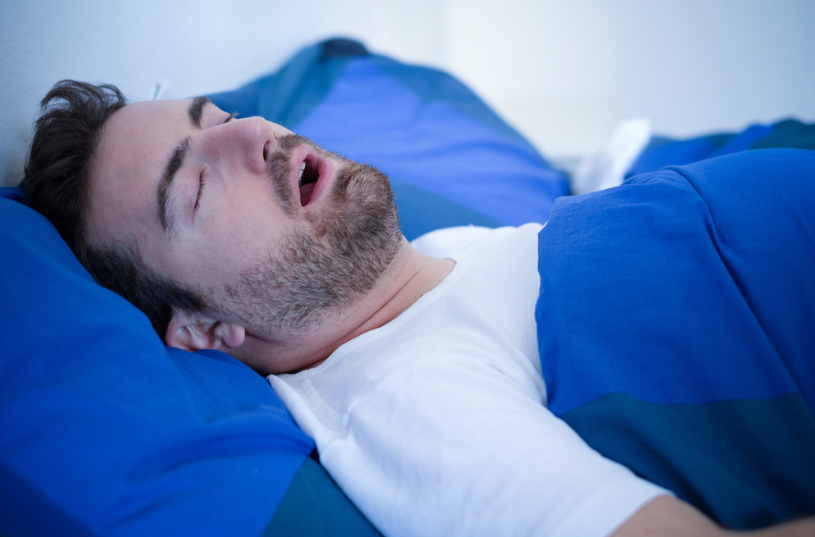
Sleep Apnea is a potentially serious disorder where breathing pauses repeatedly or gets very shallow while asleep. These can last from seconds to minutes, preventing the body from getting enough oxygen. As a result, people with sleep apnea will briefly awaken, making snoring, snorting, gasping or choking sounds as they struggle to breath. Though they will remain unaware of this once they actually wake up, whoever they share a bed or a room with might notice before they do.
The symptoms include mood changes, trouble staying asleep, daytime sleepiness, decreased concentration/attention span, morning headaches and tiredness even after a full night’s rest. While sleep apnea does not discriminate, older adults are more likely to develop this disorder.
There are two main types of sleep apnea: Obstructive and Central.
Obstructive Sleep Apnea (OSA) is the most common type. This happens when something, such as relaxed muscles or tissues, temporarily blocks a part or all of the upper airway. This hinders or even completely stops the flow of air to and from the lungs. Air has to squeeze through the blockage, which causes loud snoring sounds. Not enough air means not enough oxygen, which disrupts a person’s sleep.
Central Sleep Apnea (CSA) is less common. This happens when the brain does not send the signals your muscles need to control breathing. This results in the recurring episodes of pauses and shallow breaths while asleep, forcing a person to awaken just to take in more air. Snoring is still present, but it is not as severe.
There are two main types of CSA: Primary and Secondary.
Primary Central Sleep Apnea, also known as Idiopathic, has no clear or known cause. It also occurs more often in infants compared to adults.
Secondary Central Sleep Apnea, on the other hand, is caused by medication or another health condition. Some examples include the Cheyne-Stokes breathing, a cycle where breathing speeds up, slows down and briefly stops; and Treatment-Emergent CSA, where it emerges after a person with OSA starts undergoing Positive airway pressure (PAP) therapy.
Sleep apnea is diagnosed based on symptoms, physical exams, medical and family histories, and sleep study results. Treatments range from oral and breathing devices to lifestyle changes, depending on the severity, availability and doctor’s advice.
Everyone deserves to enjoy a full night of peaceful slumber, especially after another long day at school or work. Sleep apnea basically revokes that privilege, leaving us drowsy, irritable, as well as more prone to accidents and various health risks, especially if left untreated.
Do you or someone you know show any signs of sleep apnea? Do you need to consult a doctor or undergo treatment for a sleep disorder? Then EZ Sleep Club has got you covered! With certified respiratory and sleep experts on staff, we offer a wide range of sleep tests and services that will help you on your quest to get a good night’s rest.
For more details and questions, contact us at +1 888-588-0202.
References:
https://www.sleepapnea.org/obstructive-sleep-apnea/
https://www.sleepapnea.org/central-sleep-apnea/
https://www.sleepapnea.org/what-is-sleep-apnea/
https://medlineplus.gov/sleepapnea.html
https://www.resmed.com/en-us/sleep-apnea/sleep-blog/what-is-the-difference-between-obstructive-sleep-apnea-and-central-sleep-apnea/
>https://my.clevelandclinic.org/health/diseases/24443-obstructive-sleep-apnea-osa



